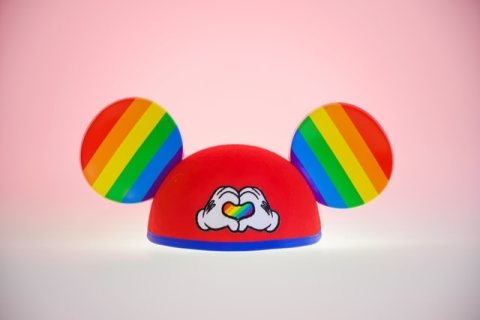

PhD student Matt Weaver explores Disney's (lack of) LGBTQIA+ representation on screen and the real world impact of this
8 min read
In March 2022, the Florida Senate passed the ‘Parental Rights in Education’ bill for the state, or as activists have called it, the ‘Don’t Say Gay’ bill.
The law bears major similarities with Margaret Thatcher’s infamous Section 28 in the UK (introduced in 1988) and forbids schools from discussing sexual orientation and gender identity. Whilst Section 28 was thankfully repealed in 2003, this new legislation is a cause of concern for LGBTQIA+ communities due to the impact it would have on queer youth.
President Joe Biden condemned the law, and White House Press Secretary Jen Psaki described it as a direct target on vulnerable children. However, The Walt Disney Company, which is very prominent in Florida, refused to condemn the law. Following the ‘Don’t Say Gay’ announcement, CEO Bob Chapek sent an email to employees acknowledging the ‘inspiring’ content that Disney had produced, and promising to continue creating diverse content. Yet, it subsequently came to light that Disney had partially funded Republican state lawmakers through political donations to the party, including GOP Governor Ron DeSantis who had proposed the bill.
Disney has always had a controversial and complicated history with the LGBTQIA+ community, often being accused of ‘toning down’ representation in order to avoid the films being banned in certain countries, and to not disrupt the family appeal of a Disney film. So with that in mind, Disney’s role in the ‘Don’t Say Gay’ law isn’t that extraordinary, is it?
Disney’s ‘inspiring content’?
Within Disney’s huge catalogue, there are (very) small glimmers of LGBTQIA+ representation, but these are often through implication. In the live-action adaptation of Beauty and the Beast (2017), Gaston’s sidekick LeFou is seen dancing with another man during the film’s final scene.
In Onward (2020), Officer Specter makes a quick reference to her girlfriend, leading to that scene being cut or altered in many countries. In Frozen (2013), eagle-eyed film fans noticed another man when Oaken briefly pointed towards his family. In the Pixar hit Finding Dory (2016), online speculation soared after a supposedly lesbian couple were spotted in the film’s trailer. Similarly in Toy Story 4 (2019), Bonnie goes to her first day at kindergarten and we get a small glimpse of a lesbian couple dropping off their child. If made more overt, these scenes would be groundbreaking, not only for representations of LGBTQIA+ communities, but also, alternative family structures, something that the ‘Don’t Say Gay’ bill aims to stigmatise. Nevertheless, Disney have instead resorted to ‘blink and you’ll miss it’ moments, where online speculation can thrive, no definitive answer is given, and Disney can take a back seat without confirming nor denying their intentions.
In Cruella (2021), we meet Artie, a flamboyant and androgynous clothes shop owner, promoted as Disney’s “first major gay character”. However, in the film, it’s never explicitly stated that Artie is queer. In Jungle Cruise (2021), Disney edged a little closer. In what could have been a poignant scene, McGregor cryptically opens up to Frank about his sexuality, stating that his ‘interests happily lie elsewhere’. I remember watching the scene, excitedly waiting for Disney to finally take the plunge - are they finally going to say it? But once again, I and many other LGBTQIA+ viewers were left disappointed. It’s further evidence that Disney just can’t, perhaps won’t, say gay when it comes to their blockbusters.
‘Queer-baiting’ and queer readings
Instead, Disney fans dealing with a lack of LGBTQIA+ representation resort to dissecting these films through ‘queer reading’. In Frozen, Queen Elsa’s independence and lack of male love interest has led audiences to hail her as a lesbian icon, even sparking an online petition for Elsa to have a female love interest in Frozen’s sequel (which was ignored and consequently challenged with an opposing petition which achieved much more signatures).
In addition, many critics and writers have highlighted Luca (2021) as an example of a film that can be read as queer, with Alberto and Luca’s close friendship representing a queer allusion. However, others have identified it as a form of ‘queer-baiting’, where LGBTQIA+ relationships are implied, but not overly stated.
Why should Disney do more?
But isn’t it good that Disney are doing something for LGBTQIA+ representation? Why is it so important to say it explicitly?
Because for queer youth who feel ostracised and uneducated, seeing openly queer protagonists and alternative family structures, and hearing words such as ‘gay’, ‘lesbian’, ‘non-binary’ and ‘transgender’ can be life-changing. In the present day, being LGBTQIA+ should not be silenced, something that the ‘Don’t Say Gay’ bill is attempting to do. Academic author Sean Griffin highlights Disney’s commitment to the traditional, nuclear family and “conservative American family values” – however, the world has evolved, familial structures have shifted and Disney’s involvement with ‘Don’t Say Gay’ is extremely contradictory for a company that caters to children, and prioritises a family audience.
Many LGBTQIA+ Disney fans and employees have taken to social media to express their anger and alienation, and at the time of writing, Mr Chapek has since confirmed that all political donations will be suspended as a result of the backlash against Disney, and a major boycott from LGBTQIA+ Disney staff. He also mentioned that Disney would give $5 million to LGBTQ+ organisations.
Albeit a little late, it’s a bold move and a step in the right direction for the company - but will this be reflected in future cinema releases? Only time will tell. Disney can and need to ‘say gay’, now more than ever.
Matt Weaver is a full-time PhD student from the School of Film, Media and Communication in the Faculty of Creative and Cultural Industries, researching representations of gay men and the HIV/AIDS virus in British and American film and television.
